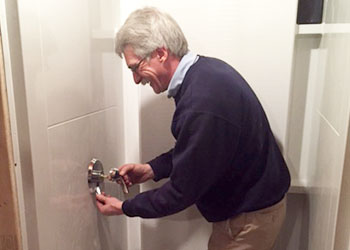A sump pump is used in applications where excess rainwater or groundwater needs to be pumped away from a particular area. It sits inside a basin (also known as a sump) that collects this excess water.
Types of sump pumps

- Pedestal - are positioned out of water, above your sump basin. They are good for small basins, as the pump isn't submerged. They are powered by electricity.
- Submersible - are positioned under water in your basin. They are powered by electricity.
- Back up - only used in the event of a blackout. When the power goes out, the battery on the unit kicks in providing the pump with power so it continues working.
Even an inch or two of water in your basement can cause thousands of dollars in damage. There's also the inconvenience of cleaning and restoring your basement to its original condition.
What to consider
- Horsepower - sump pumps are usually 1/4 to 1/3 HP. If you only have a minor moisture problem, you don't need the most powerful option.
- Head pressure - this is the height a pump can raise water. The pump you choose must be able to lift water out of the sump pit and up to the outlet pipe. A licensed plumber will be able to help you make that calculation.
- Cord length - You have to be able to plug a sump pump directly into a GFCI outlet. It can NEVER be plugged into an extension cord.
- Voltage - Most residential sump pumps operate on standard 110-volt circuits.
- Backup and alarm systems - choose one that fits your lifestyle best. There are even ones available that will text your cell phone when it fails!























